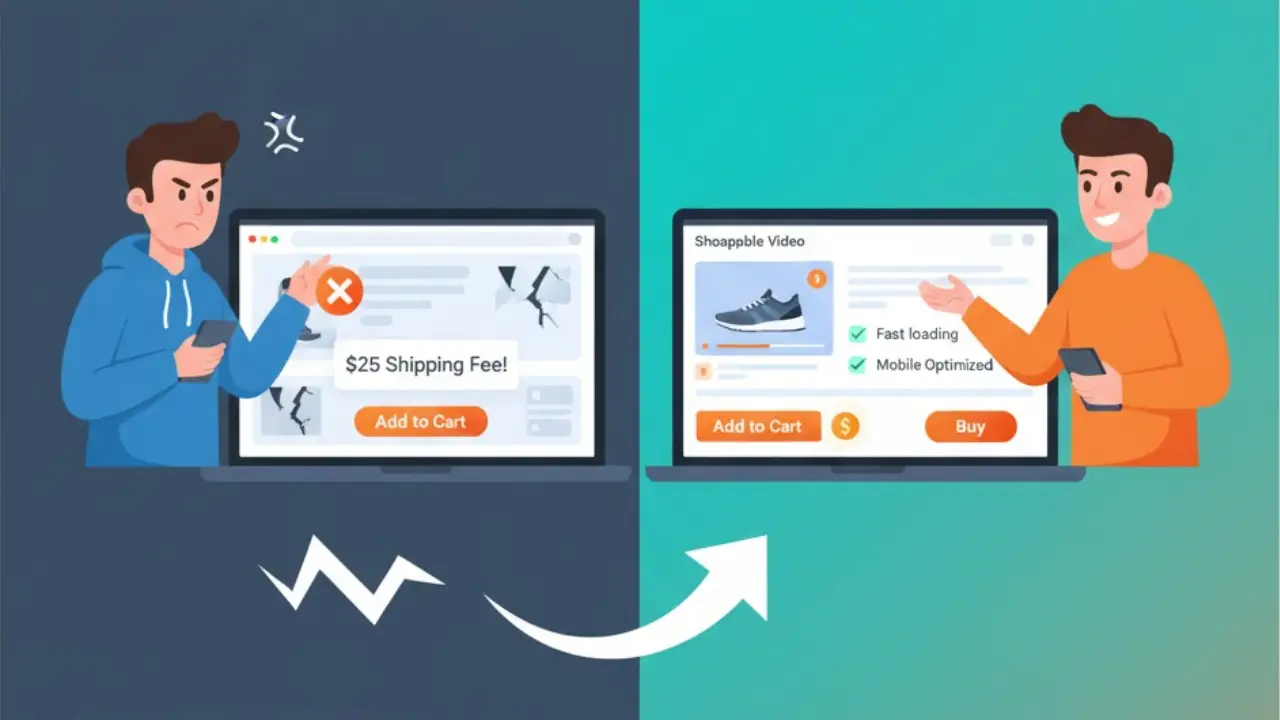Is your store leaking customers? A “bounce” is when a visitor lands on your site… and leaves. Instantly.
They don’t click. They don’t shop. They just vanish.
This is a huge problem. Every bounce wastes your ad money and hurts your Google rankings. But there’s good news: you can fix it.
Learning how to reduce e-commerce bounce rates isn’t about one magic button. It’s about creating a smooth, trustworthy, and engaging experience for your user.
Let’s dive into 10 actionable ways to do just that.
10 Essential Fixes to Lower Your Bounce Rate
First, let’s cover the foundational fixes. These are the non-negotiables for a “sticky” site.
1. Supercharge Your Page Load Speed
In 2025, faster is always better. If your page takes more than 3 seconds to load, you’ve lost the sale.
Action: Compress your images. Use a fast web host. Every millisecond counts.
2. Design for Mobile First
Most of your traffic comes from a smartphone. “Mobile-friendly” is not enough.
Action: Design for the thumb. Are your buttons easy to tap? Is your checkout seamless on a small screen? If it’s clumsy, they will bounce.
3. Simplify Your Site Navigation
Don’t make your customers think. A confused shopper is a “bouncing” shopper.
Action: Your menu should be simple and predictable. Use clear categories like “Shop Men’s” or “About Us.”
4. Use High-Quality, Optimized Images
Customers need to see what they’re buying. But big images are slow.
Action: This is a balancing act. Use high-resolution photos, but save them in modern formats (like .WebP) to keep them fast.
5. Write Crystal-Clear Product Descriptions
Your description must answer every question before the customer has to ask it.
Action: What is it made of? What’s the size? If a user has to “hunt” for info, they’ll just bounce.

6. Showcase Social Proof (Reviews)
A product page with zero reviews is a red flag. It looks risky.
Action: Integrate customer reviews, ratings, and user-generated contents. Social proof builds instant trust.
7. Be Honest About All Costs
Nobody likes a surprise “shipping fee” at checkout.
Action: Be transparent about all costs upfront. If a user suspects you’re hiding fees, they won’t even bother to click. They’ll just leave.
8. Fix All Broken Links and 404 Errors
This is a simple but critical technical fix.
Action: If a user clicks an ad and lands on a “404 Not Found” page, that’s a 100% bounce. Run a broken link checker and fix every dead link.
9. Craft an Unmissable Call-to-Action (CTA)
Is your “Add to Cart” button big, bold, and obvious?
Action: Your CTA should be the most prominent, high-contrast, unmissable object on the page. Don’t make people look for it.
10. How to Reduce E-commerce Bounce Rates with Video
What do all first 9 of those tips have in common? They optimize a passive page.
Think about it. The single biggest reason for a bounce is often boredom or doubt. A user lands, sees a static photo and a price, and thinks, “Meh. I’ll look elsewhere.”
They are unengaged. So, they bounce.
How do you stop this? You engage them instantly.
Video is the most powerful tool for this. It stops the scroll. It demonstrates your product’s value in 30 seconds. It builds trust in a way a static photo never can.
However, even a standard video can lead to a bounce. They watch it… then what? They have to find the CTA, leave the player… more friction.
The ultimate way to reduce e-commerce bounce rates is to convert the user before they can even think about bouncing.
This is where Shoppable Video changes the game.
A platform like Whatsvideos lets you put the “Add to Cart” button and product info directly inside the video player.
A user lands. They are immediately hooked by an exciting video. They can purchase the product at their moment of peak desire.
You don’t just reduce the bounce. You eliminate it by making a sale on the spot.
Conclusion: Stop Leaking Sales
A high bounce rate is a clear sign that your store’s experience isn’t meeting customer expectations.
First, use the 9 foundational tips to build a fast, clear, and trustworthy site.
But if you’re serious about the most powerful fix, it’s time to stop being passive. Start by turning your “boring” pages into active conversion tools.
[Ready to stop the bounce? Get Whatsvideos now and turn your passive product pages into high-converting, shoppable experiences.]

